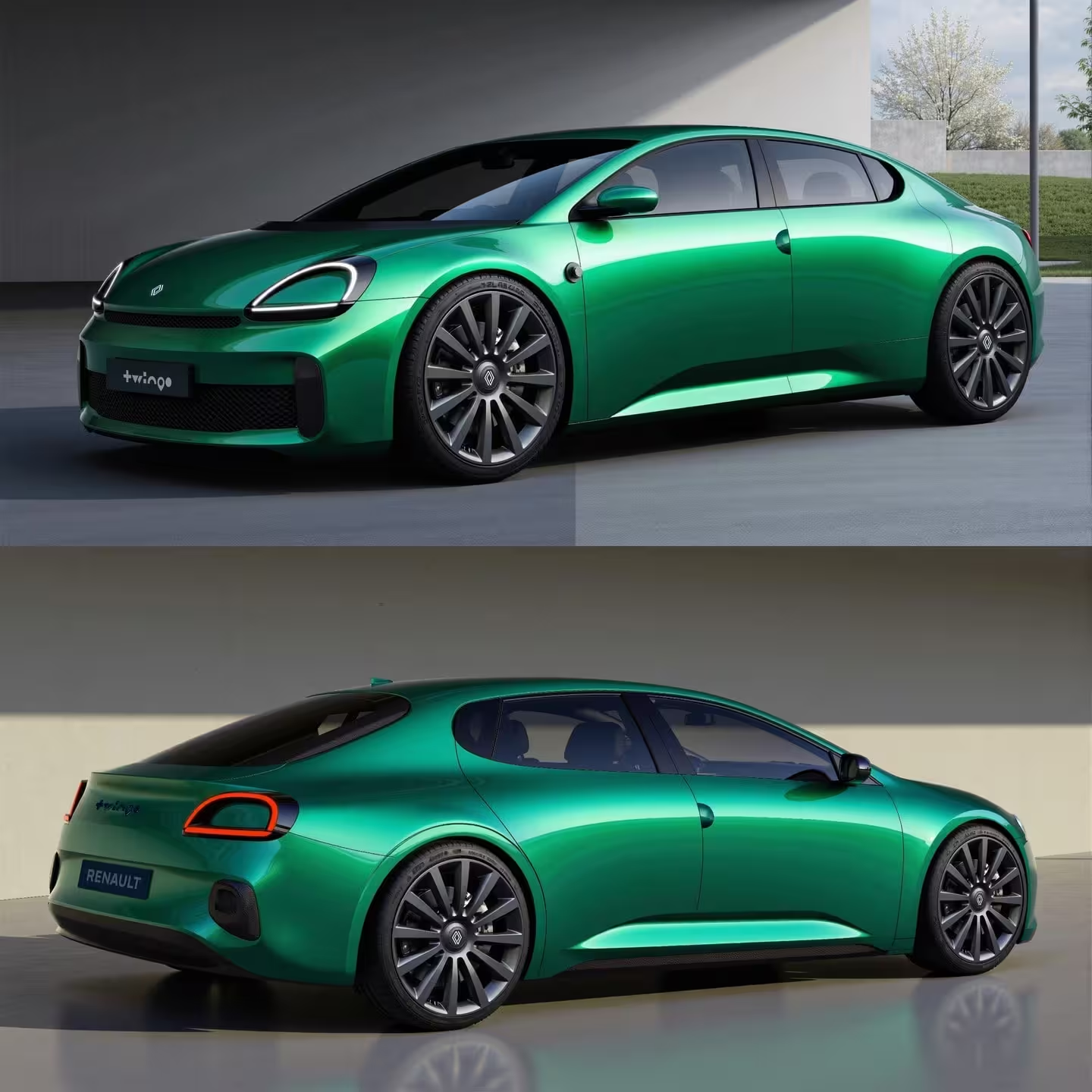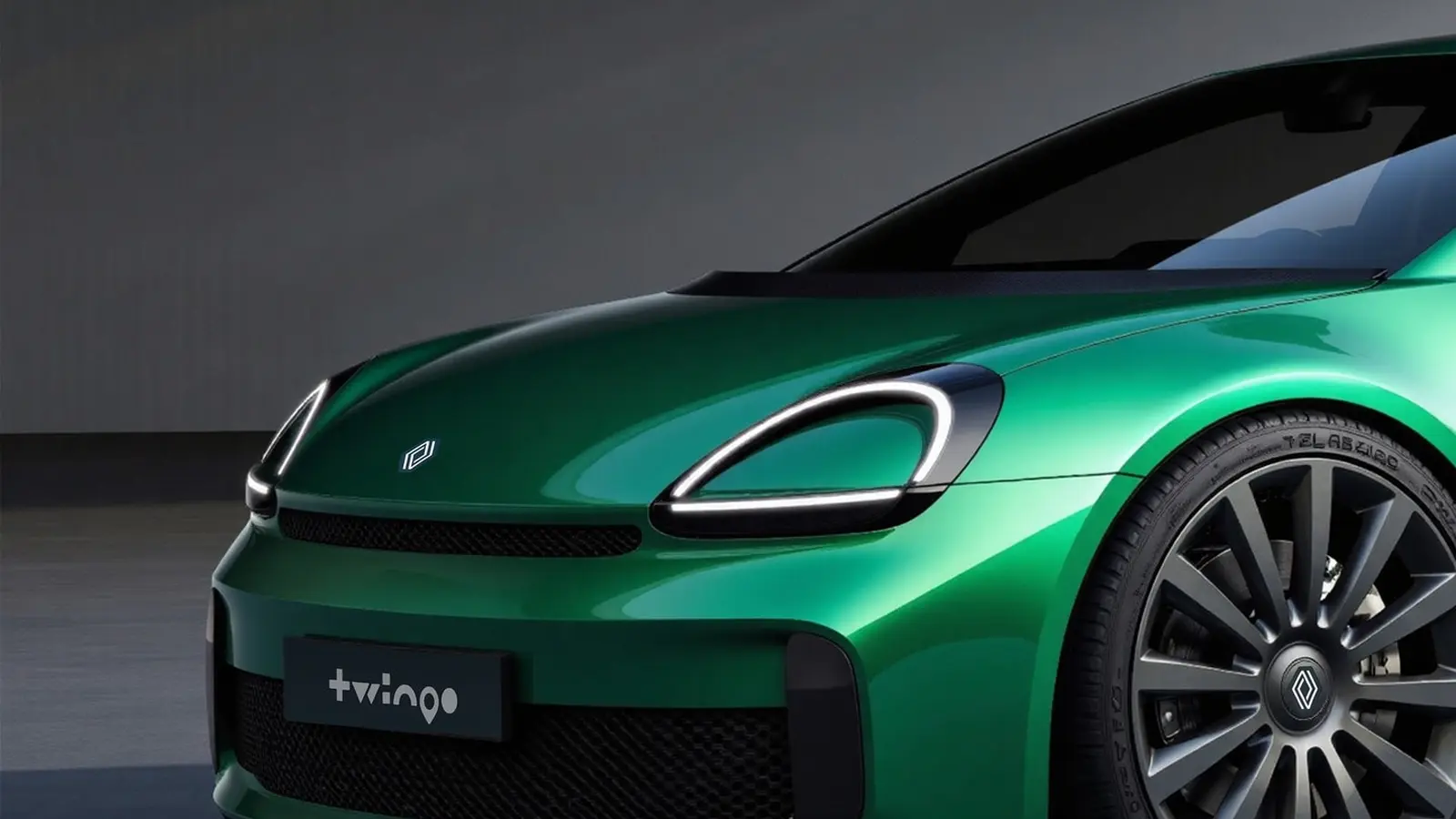4 Minutes
Retro city car turned imaginative concept: Twingo like you've never seen
Renault's tiny Twingo has been reborn as an affordable, stylish electric city car in Europe — and now digital artists are taking that revival a step further. Italian-based designer Zhe Huang, known online as gigi.huang777, has reinterpreted the all-new Twingo E-Tech in two striking CGI directions: a much larger MPV/minivan and a smooth, egg-shaped sedan. Both concepts are purely virtual, but they offer a fun glimpse of how Renault's compact EV language might look if stretched into new segments.
A short history: Renault and the U.S. connection
Renault hasn’t sold cars officially in the United States since the late 1980s. The French brand’s last formal presence ended after selling its stake in American Motors Corporation (AMC) to Chrysler; AMC-built models such as the Renault Alliance and the Medallion lingered briefly under Chrysler’s Jeep-Eagle network. Earlier still, the Renault 5 — nicknamed “Le Car” in America — established Renault’s small-car credentials in the U.S. and left a legacy that influences today’s retro-inspired EV designs.

What the CGI concepts show
Designer Zhe Huang expands the Twingo’s cheerful proportions into two new silhouettes:
- A roomy minivan/MPV: This hypothetical Twingo MPV scales the compact city car into a family-friendly, multi-seat layout. It keeps the Twingo’s friendly face and tall greenhouse but adds the practicality and sliding-door feel you'd expect from modern minivans.
- An aerodynamic sedan: The second render is an egg-shaped sedan with flowing aerodynamics — a design direction premium brands have toyed with on EV flagships like the EQE/EQS. Here, the compact Twingo cues combine with a teardrop profile for an unexpectedly cohesive look.
Neither design is official, yet both highlight how strong character and efficient packaging could translate across vehicle classes.
Why this matters for EV design
Renault’s recent strategy shows that nostalgia and smart pricing can be powerful levers. The Twingo E-Tech — revived for European markets — pairs retro styling with a surprisingly practical cabin, five doors and an advertised WLTP-ish range around 263 km (163 miles). Reported pricing below €20,000 (around $23k) positions it as a serious budget EV alternative to rivals like the Dacia Spring and Hyundai Inster while resisting the crossover trend by keeping the hatchback spirit alive.
These CGI explorations matter because they test whether the brand’s visual identity can carry into larger, more mainstream segments where family buyers live.

Market context and realism
- Renault 5 E-Tech: a more upscale, fashionable sibling that also taps into retro appeal but won’t come to the U.S.
- MPVs in the U.S.: traditionally less popular than crossovers, but models such as the Chrysler Pacifica, Toyota Sienna, Honda Odyssey and Kia Carnival still sell to families.
Realistically, Renault’s small European-focused EVs are unlikely to return to U.S. dealers anytime soon. Still, these renders fuel an entertaining “what if?” — imagining compact EV design translated into segments Americans still buy.
Quick highlights
- Designer: Zhe Huang (aka gigi.huang777), Huawei Milan designer and virtual artist
- Two CGI directions: MPV/minivan and aerodynamic sedan
- Base model: Renault Twingo E-Tech — compact EV with retro cues, five doors, ~263 km range, and aggressive European pricing
"It’s a reminder that great design language can be stretched in clever ways — even if it remains digital fantasy for now," says one industry observer.
Whether or not Renault ever stretches the Twingo into a real MPV or sedan, these creative renders underscore how compact EV platforms can inspire fresh thinking across vehicle categories. For enthusiasts and designers alike, it’s an invitation to imagine bolder possibilities for small electric cars.
Source: autoevolution


Leave a Comment